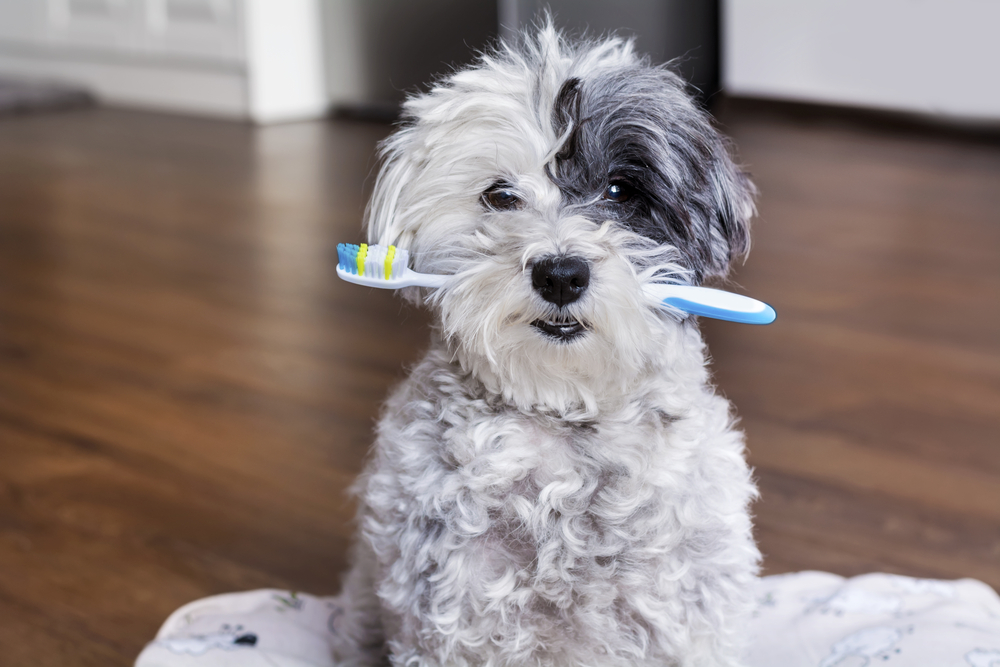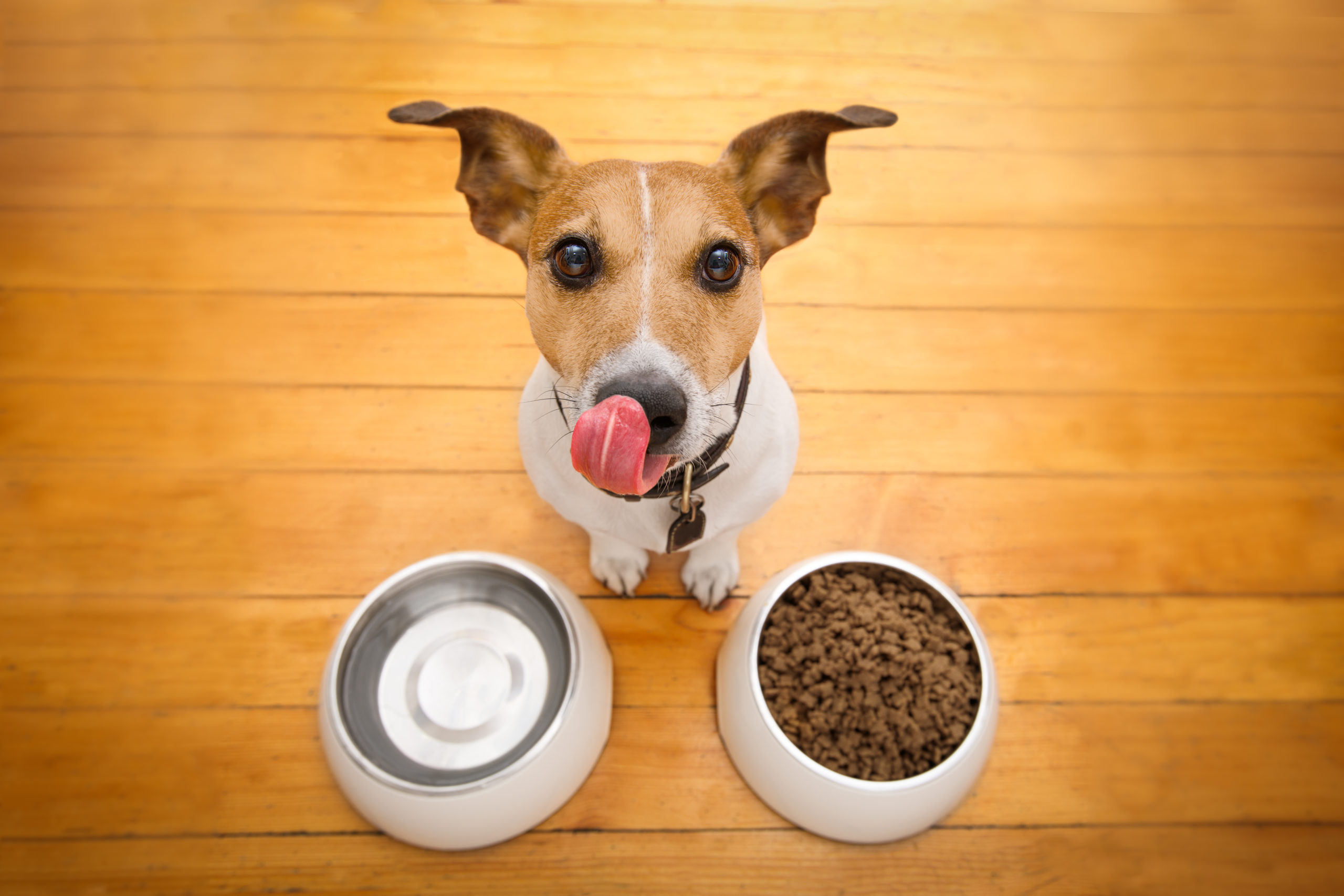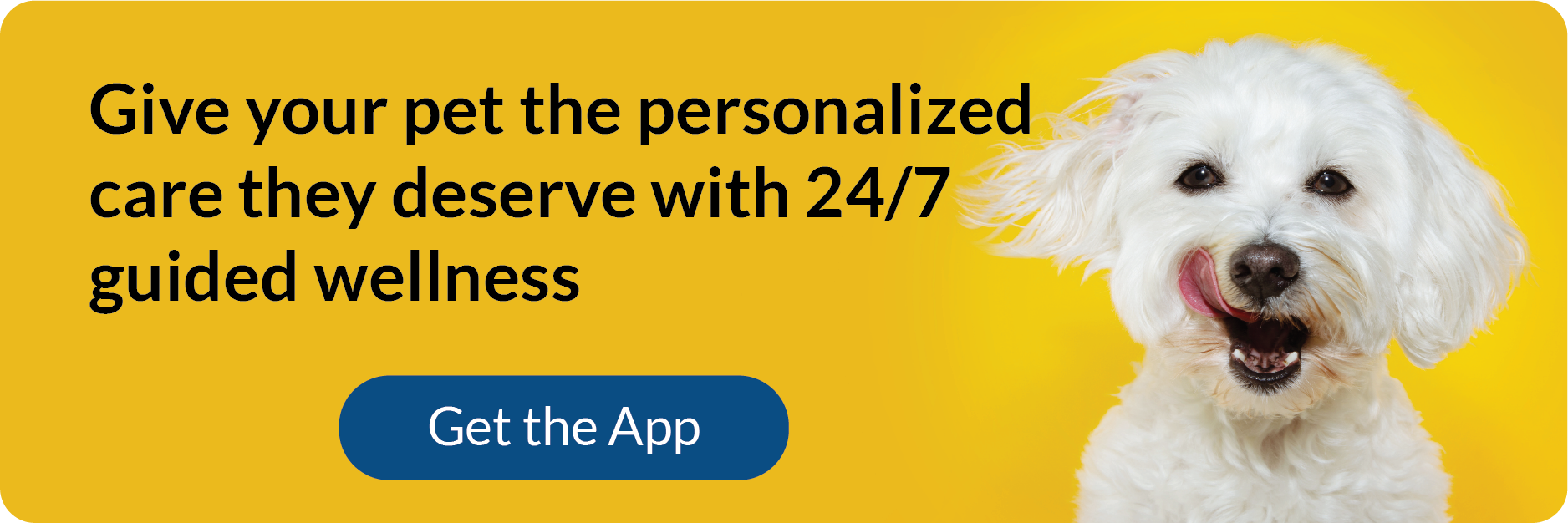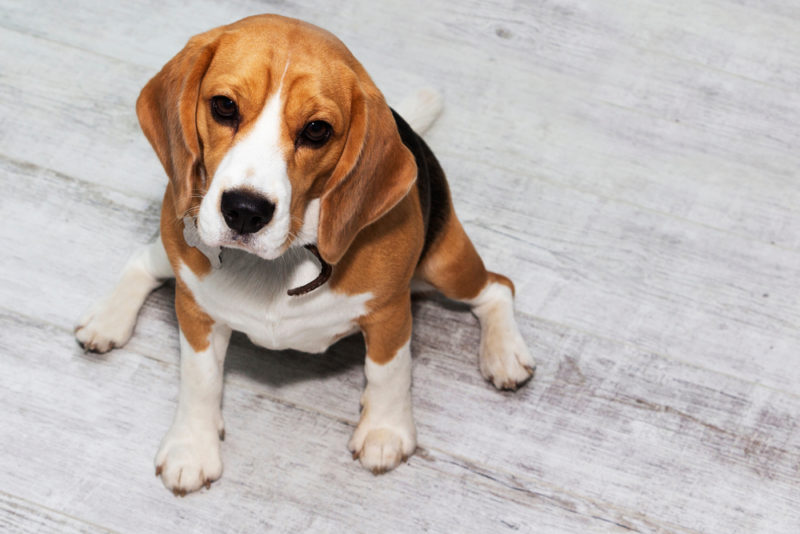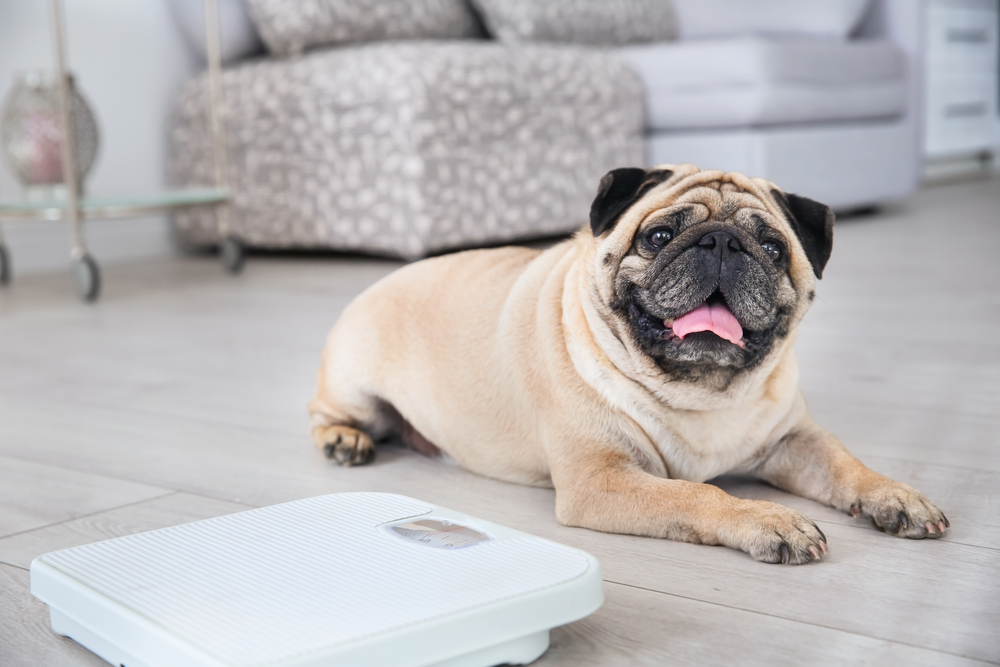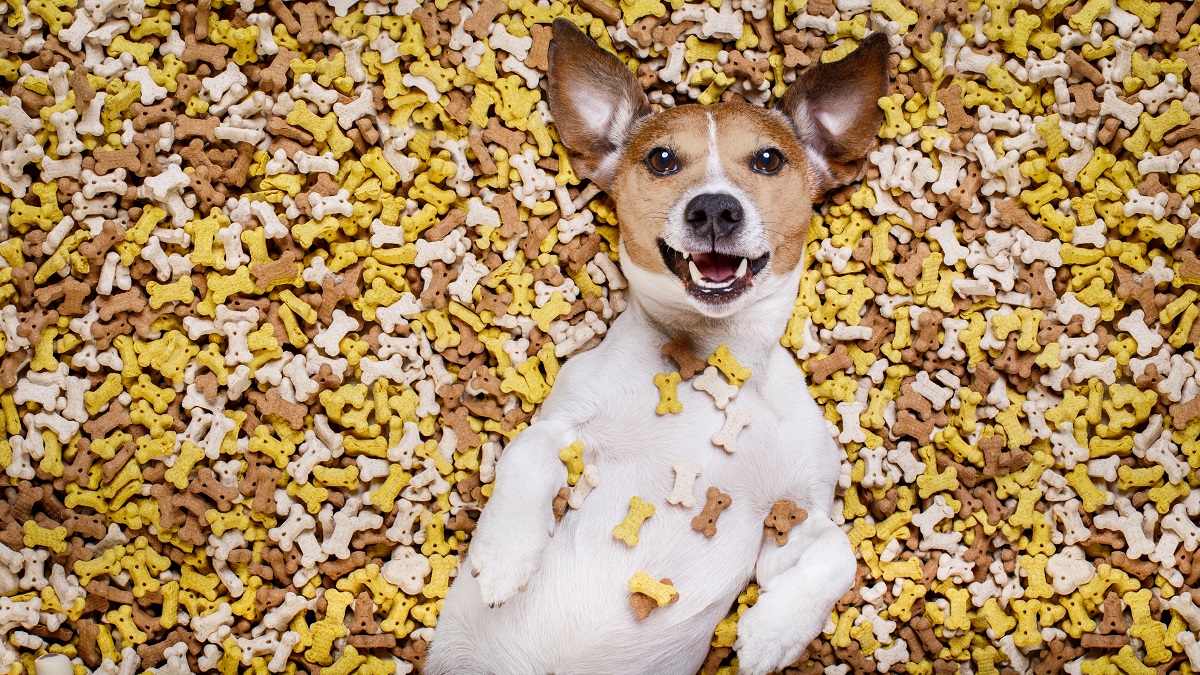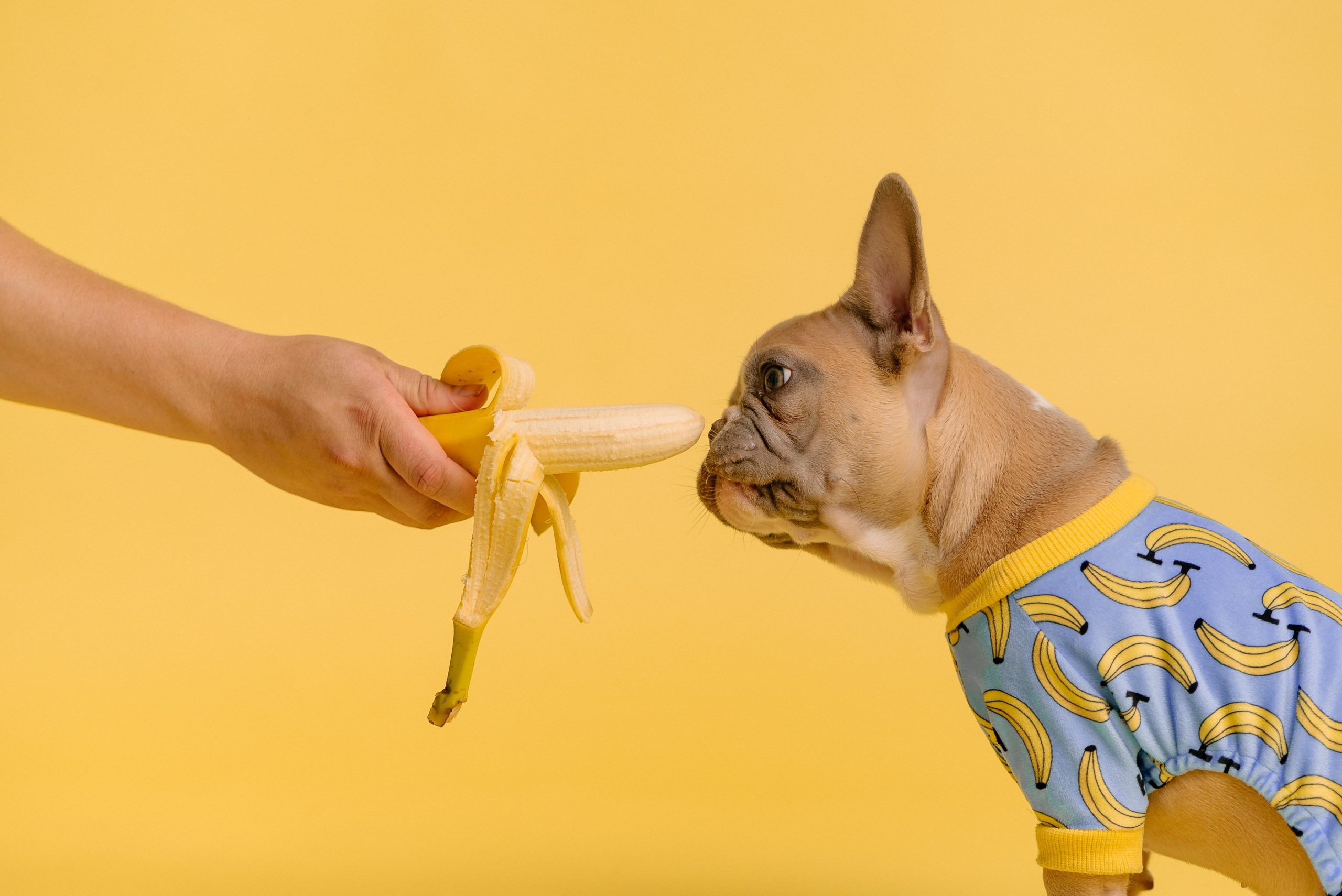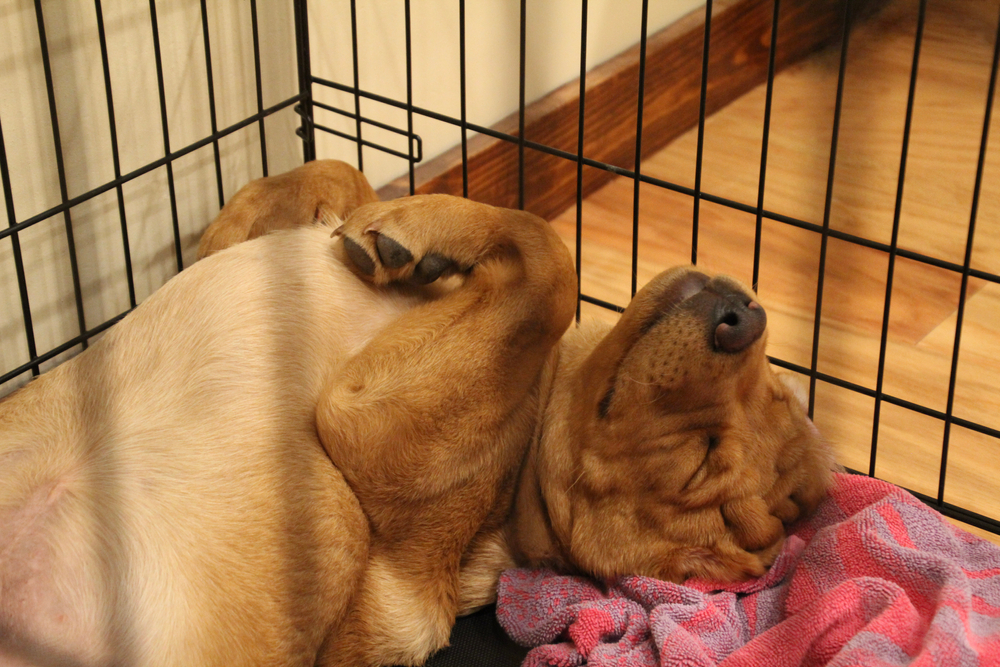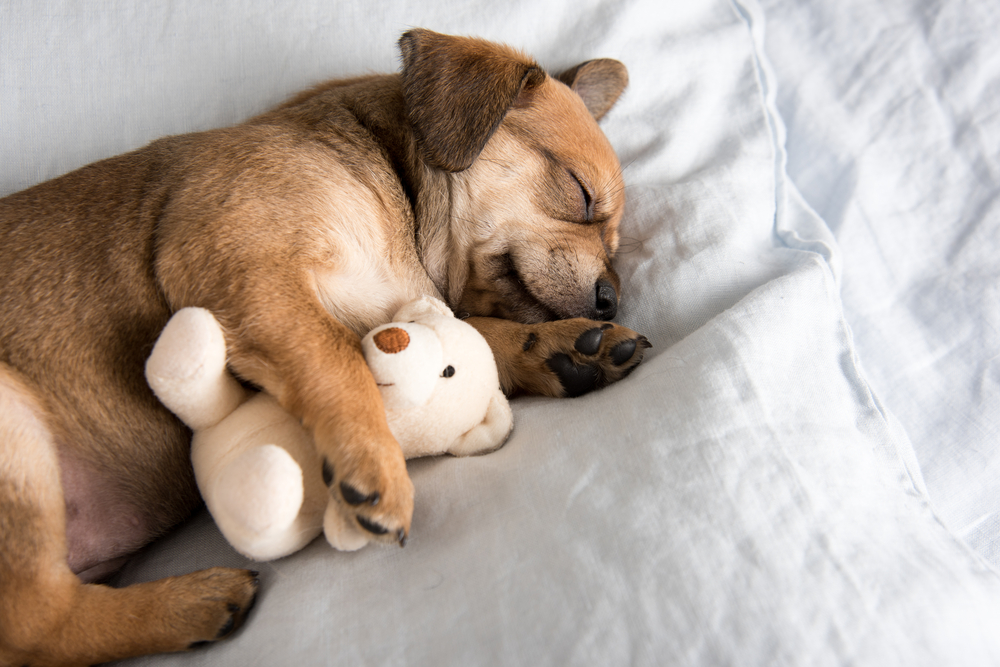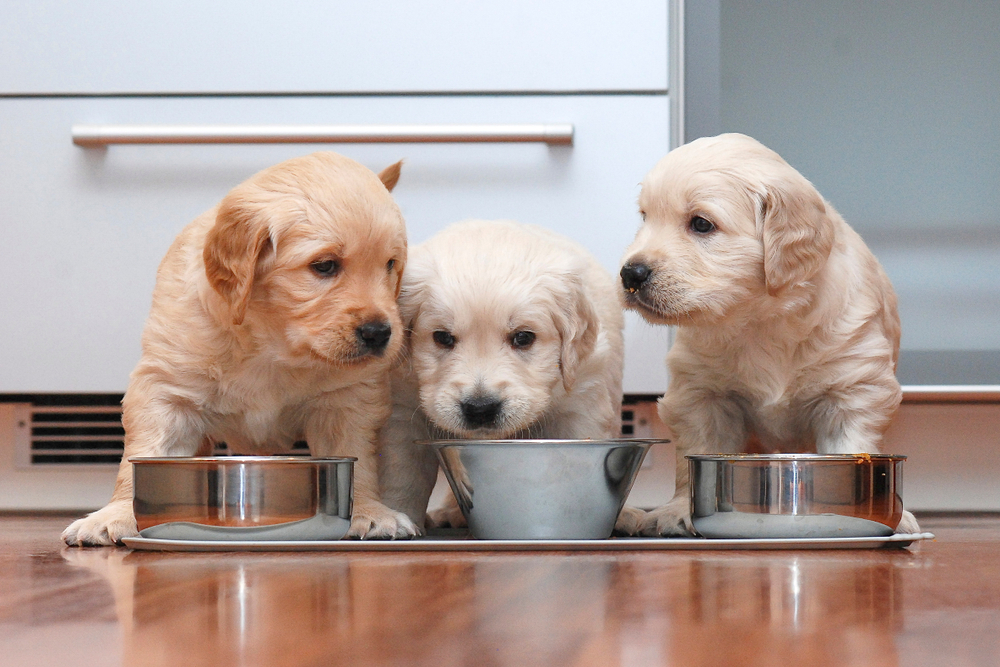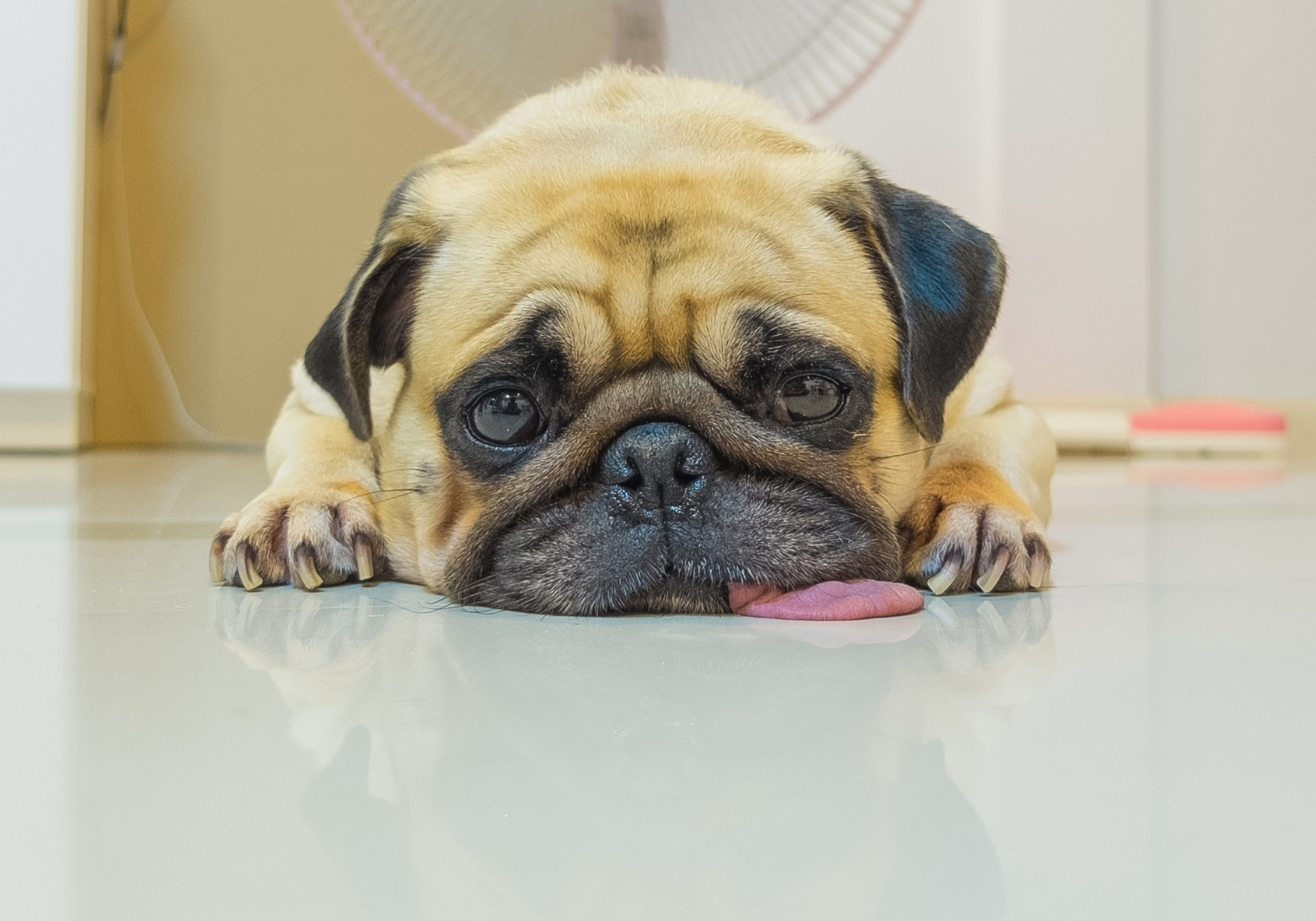Why does my dog’s breath smell so bad? Dogs need their teeth brushed? Yes, indeed! Veterinarians recommend brushing a dog’s teeth every day in order to prevent the most common disease diagnosed amongst dogs in the United States: dental disease. Within the past 20 years, awareness of and advancements in dental treatment for animals have brought the importance of dental care and canine oral hygiene to the forefront of long-term health maintenance. In fact, teamwork between pet parents and veterinarians to preserve dental health and prevent dental disease in dogs is a large reason why our pet dogs are living longer than they were just twenty years ago!
Since animals will instinctually find a way to keep themselves fed, and are also programmed to hide their pain, it can be easy to overlook what problems might be brewing inside of their mouths. Luckily, with you providing home dental care for your precious pup, and your veterinarian performing annual exams and dental cleanings, dental disease and gum disease no longer get a free pass to cause havoc on your dog’s health.
Why Do Dogs Need Their Teeth Brushed?
Contrary to popular belief, occasionally gnawing on chew toys and feeding hard kibbles to dogs are not quite enough of a defense to impede the buildup of harmful bacteria and plaque that contributes to gingivitis and dental disease. If you’re curious if dogs get cavities, the answer is, not commonly. But, dog mouths can set the stage for gingivitis and disease due to these characteristics:
– Overcrowding of large teeth in a small mouth – Especially in small dogs (like these toy breeds: Chihuahuas, Yorkies, Maltese, toy Poodles, and mini Dachshunds–just to name a few!), there are many large teeth in that small mouth! Some teeth are cramped and rotated, and spacing between the teeth is decreased, making it a hospitable place for the plaque biofilm to nestle onto the tooth surface and below the gumline and set up inflammation.
– Retained baby teeth – At the age of 4-6 months, dogs will typically lose all of their baby teeth and grow a full set of adult teeth. This is similar to the process that occurs as human children grow up! Occasionally, your dog’s baby teeth decide to just move over a bit instead of falling out. This allows the corresponding adult tooth to erupt and grow in right next to it while the baby tooth is still there. In an already crowded mouth, this creates even more of an issue requiring attention.
– Short tooth roots and tiny bones – Again, small breed dogs are most severely affected by dental disease because they have disproportionately large teeth with short roots in comparison to larger breed dogs. They also have tiny jawbones to begin with!
Advanced periodontal disease can overcome and eat away the tooth structures causing teeth to loosen or even fall out! It is also common for the disease to weaken the jaw and predispose these little guys to jaw fractures during dental procedures, and even during everyday activities like eating and play.
– Malocclusion – Through selective breeding over the years, humans have created cute and unusual-looking features in some dog breeds that we have come to love and recognize. Who doesn’t love the short snout of a Pug, or the underbite of a Bulldog? While these features create the breed appearance we seek, things like the chewing surface of the teeth are altered away from what nature intended. Underbites can result in the teeth hitting each other, or the roof of the mouth, at awkward and damaging locations. Since the same number of teeth are crammed into such a short snout, this also creates a situation where teeth are too close together (allowing food material to become more easily trapped between the teeth), and sometimes even rotated in order to accommodate them all. Needless to say, when teeth are rotated and not in an orderly line, a dog’s natural chewing motion is affected.
Knowing that dogs are predisposed to having oral issues, preventive care is key! Our veterinarians recommend a combination of daily home care, annual veterinary examinations, and dental cleanings while under anesthesia to preserve the health of your dog’s mouth for years to come.
Dental Care at Home
There are several tenets of home doggie dental care and maintenance that pet parents can incorporate into their daily routine that will prolong the health of the teeth and gums. The Veterinary Oral Health Council (VOHC) has created a list of products recommended to achieve positive long-term effects and keep your buddy comfortable.
Dental Diets
Where over-the-counter hard kibbles have minimal effect on the breakdown of tartar from chewing, some prescription dental diets (like Hill’s T/D, and Purina Pro Plan DH) have been scientifically proven to help scrub the tooth surface and gumline through chewing action, inhibiting plaque and tartar from building as quickly.
Dental Chews, Gels, and Water Additives
Not all dental chew items are created equal! Veterinarians often see broken teeth from chewing antlers, hooves, bones, and some toys that are too hard for a dog’s teeth. Veterinarians advise not to give your dog anything to chew that is so hard that it cannot be indented with your fingernail or hurts your knee if you knock on it. Finding an appropriate product (refer to the VOHC list for dogs) that your dog likes to chew daily will help manually remove plaque and tartar through chewing action while giving your pup a fun activity and treat. The VOHC list also includes water additives and dental gel products that also will work to prevent plaque buildup.
AskVet Tip: Be sure to observe your dog with any new chew treats to ensure that they do not swallow them whole! That defeats the purpose and can also cause dangerous intestinal blockages.
Daily Tooth Brushing
It is easiest for pup and parent to train dogs to love having their teeth brushed when they are young puppies. However, if you have an older pup, don’t fret–it will just take a little more time and patience! Creating a normal routine including lots of treats and praise can make tooth brushing an easy and effective way to practice dental health at home:
- Select a pet toothbrush or finger brush to start out and see what you both find to be more comfortable. Next, choose a good quality pet enzymatic toothpaste that is flavored by something your dog finds delicious, like chicken, beef, or peanut butter. Although chicken-flavored dog toothpaste might sound strange, pet toothpaste is designed to break down plaque and is safe when it is swallowed. It is important to not use human toothpaste on pets, as they can cause stomach upset.
- Find a nice comfortable place where your dog is either lying down, sitting, or in your lap; nice and relaxed is key! Go very slowly when just starting out, and initially just start to pet with your hand around your dog’s mouth to get them used to your fingers moving their lips. If your dog demonstrates any aggression, do not continue and consult your vet for further guidance. If your dog is a bit confused or acts suspicious, showering your pup with treats to create a positive experience can quickly dispel any discomfort. Once your dog accepts your hands near their lips and mouth, you can start to introduce the toothpaste and brush tool. To start, letting them lick some toothpaste off the bush is also a great way to get them to associate these items as positive things.
AskVet Tip: If your dog does not like the feel of the brushing tools in their mouth, a chicken broth-soaked finger or a broth-soaked-gauze-wrapped finger is a good way to start too! Once they are more accepting of the feel, try the finger brush again, or just stick with gauze!
- Once you are both ready and comfortable, begin to lift the lips and massage the toothpaste with the brush tool onto the outsides of the teeth in a circular or back and forth motion. Only the outsides of the teeth need to be brushed but do be sure to go far back into the mouth to get those large molars where much of the plaque will be lurking. When just starting out, brushing sessions will likely be short, but over time can lengthen as the dog becomes accustomed to the feel. Spending a few minutes massaging all outer surfaces of the upper and lower teeth will do wonders to prevent plaque and tartar buildup.
AskVet Tip: Be sure that toothbrushing is a positive experience full of praise and treats! The more you practice with your pet at home, the more comfortable they will also be for oral exams by the veterinarian too!
Annual Veterinary Exams and Dental Cleaning
Home care can do wonders to keep your dog’s mouth healthy, but unfortunately, it is not quite enough to keep the dentist away completely. We recommend annual veterinary wellness visits that include an oral assessment and recommendations for scheduling a dog teeth cleaning under anesthesia when your veterinarian advises you it is necessary for your pup. The greatest benefit of your home care efforts is achieved after all of the diseased teeth are treated appropriately and a full professional cleaning restores the surfaces of the teeth and gums for you to maintain.
What about “anesthesia-free” dental cleanings offered at groomers and pet stores? As you now know after reading about some of the complicated problems that occur inside of a dog’s mouth, it is clear that the best way to clean a dog’s teeth is to have a nice relaxed anesthetized dog so they are not stressed and struggling. Only then can the full mouth and all sides of the pet’s teeth truly be examined, all issues with the disease-causing plaque above and below the gumline be addressed, and infections detected and treated appropriately. Anything less, and you are just removing some of the superficial yellow stuff but leaving behind the issues that will continue to wreak havoc on those sensitive tooth structures. In fact, non-anesthetic dentistry for pets has been outlawed in Canada as a deceptive business practice–since it is considered a cosmetic procedure only and does not do anything to help the dog’s overall health.
Promoting Dental Health Through Home and Veterinary Care
Dogs, especially small breeds, are living longer than ever and we have more tools at our fingertips to be sure that their lives are healthy and comfortable. Pet parents and veterinarians working together to promote healthy teeth and gums will ensure that dental issues are not a pain in the mouth for your dog!
Our AskVet Veterinarians are available to discuss all of your pet’s needs 24 hours a day, 7 days a week. Whether you have an immediate need or are looking to improve your pet’s overall wellbeing, just sign into your account and one of our friendly and knowledgeable veterinary experts will attend to your needs, no appointment required!
Written by:
Alexa Waltz, DVM
Dr. Waltz was raised near the beaches of Southern California but has spent her adult life living all over the beautiful United States while serving in the military and as a military spouse. She left California for the first time to pursue a career as a veterinarian at Louisiana State University School of Veterinary Medicine and graduated as a Doctor of Veterinary Medicine in 2006. She was accepted into the US Army Health Professionals Scholarship Program during vet school and upon graduation spent her military years as a veterinarian in San Diego working for the US Marine Corps and US Navy Military Working Dog programs as well as caring for pets of service members. After her military service, she became a civilian veterinarian and continued as a small animal general practitioner at clinics in California, Rhode Island, Colorado, and Maryland. Dr Waltz loves to see her “in person” patients just as much as communicating with and assisting pet parents virtually on AskVet. Dr Waltz is also a Mom to 3 humans, 2 guinea pigs, and 1 Australian Shepherd and in her spare time she loves traveling, adventures, exercising, and doing just about anything out in nature!

